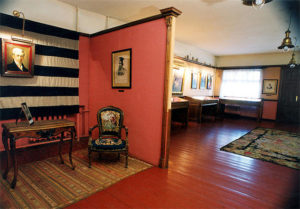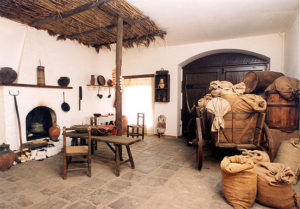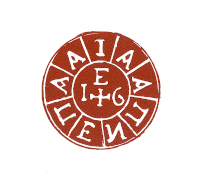
Address: 20 Krasny Pereulok, Odessa, 65026, Ukraine
Тel.: +380/482-357136 | e-mail: hfc@hfcodessa.org
The museum is open Monday – Friday, from 10:00 till 17:00.
 The Philike Etairia Museum has been operating since 1979 as part of the Odessa Museum of Regional History. In 1994 the museum moved to its historic location, the building where members of the Philike Etairia (Friendly Society) once met and where the HFC is today headquartered. The museum was created by the Hellenic Foundation for Culture in cooperation with the Odessa Museum of Regional History and museums from Greece. Recently, a new ethnographic gallery opened in a courtyard of the museum.
The Philike Etairia Museum has been operating since 1979 as part of the Odessa Museum of Regional History. In 1994 the museum moved to its historic location, the building where members of the Philike Etairia (Friendly Society) once met and where the HFC is today headquartered. The museum was created by the Hellenic Foundation for Culture in cooperation with the Odessa Museum of Regional History and museums from Greece. Recently, a new ethnographic gallery opened in a courtyard of the museum.
The Philike Etairia, founded in Odessa in 1814, was the organizational committee of the Greek War of Independence of 1821. The founders of the Friendly Society were Athanasios Tsakalof, Nikolaos Skoufas and Emmanuel Xanthos. The Friendly Society spurred the growth of Philhellinism and found financing and supporters among Greek expatriates in the Mediterranean and in the rest of Europe.
The headquarters of the Friendly Society were in Krasny Pereulok Street, 18 in Odessa, which was formerly the house of the father of Gregorios Maraslis, who became the Mayor of Odessa some decades later. The leader of the Friendly Society was Dimitrios Ypsilantis, a Greek General in the Tsarist army.
Gregorios Maraslis, was a well-off Greek, who was elected Mayor of the city in 1878. During his service he donated most of his wealth to build theaters, parks, libraries, trams and a power plant. One of the central squares of the city is called Greek Square — in honor of the Greek community of Odessa. In addition, Odessa has various streets and buildings that carry references to the Greek presence in the city.
However, the Greek presence in the area goes back to ancient times, when in the 7th and 6th centuries BC Greeks settled the coast of the Black Sea between the Dnieper River in the east and the Danube River in the west. During this period they founded there large cities, Olbia, Tyras as well as smaller towns, Nikonion. In addition, many small Greek settlements formed around larger administrative centers. Settlements have also been found at greater distances from the cities. Thus, more than ten settlements have been located of the coastal Greek settlements mentioned by ancient authors on the Black Sea coast between Olbia and Tyras, including the city of Odess or Ordess, and the Istrian and Isiac harbors (Pliny VI, 82, Ptolemy, IV, 5, 14, Pseudo-Arrian, 87, Arrian, 31)
Remains of ancient Greek settlements on the shores of the Bay of Odessa were discovered as early as the beginning of the 19th century. Earthworks around Primorskij Boulevard and the Opera House uncovered ancient Greek burials with amphorae and other objects. We currently know of ten sites dated to the Archaic and Classical Greek periods and nine settlements dating to the early centuries AD, on the shores of the Bay of Odessa. Excavations produced large quantities of pottery imported from Athens, Thasos, Chios, Sinope and other Greek centers.
The Greek presence in Odessa and in the greater coastline of the Black Sea was continuous. Odessa as part of the Russian Empire was founded after a imperial decree of Katherine the Great in 1794. The Greek population of Odessa were merchants, and the most distinguished of them benefited the local community with schools, libraries, presses, hospitals and churches.








You must be logged in to post a comment.